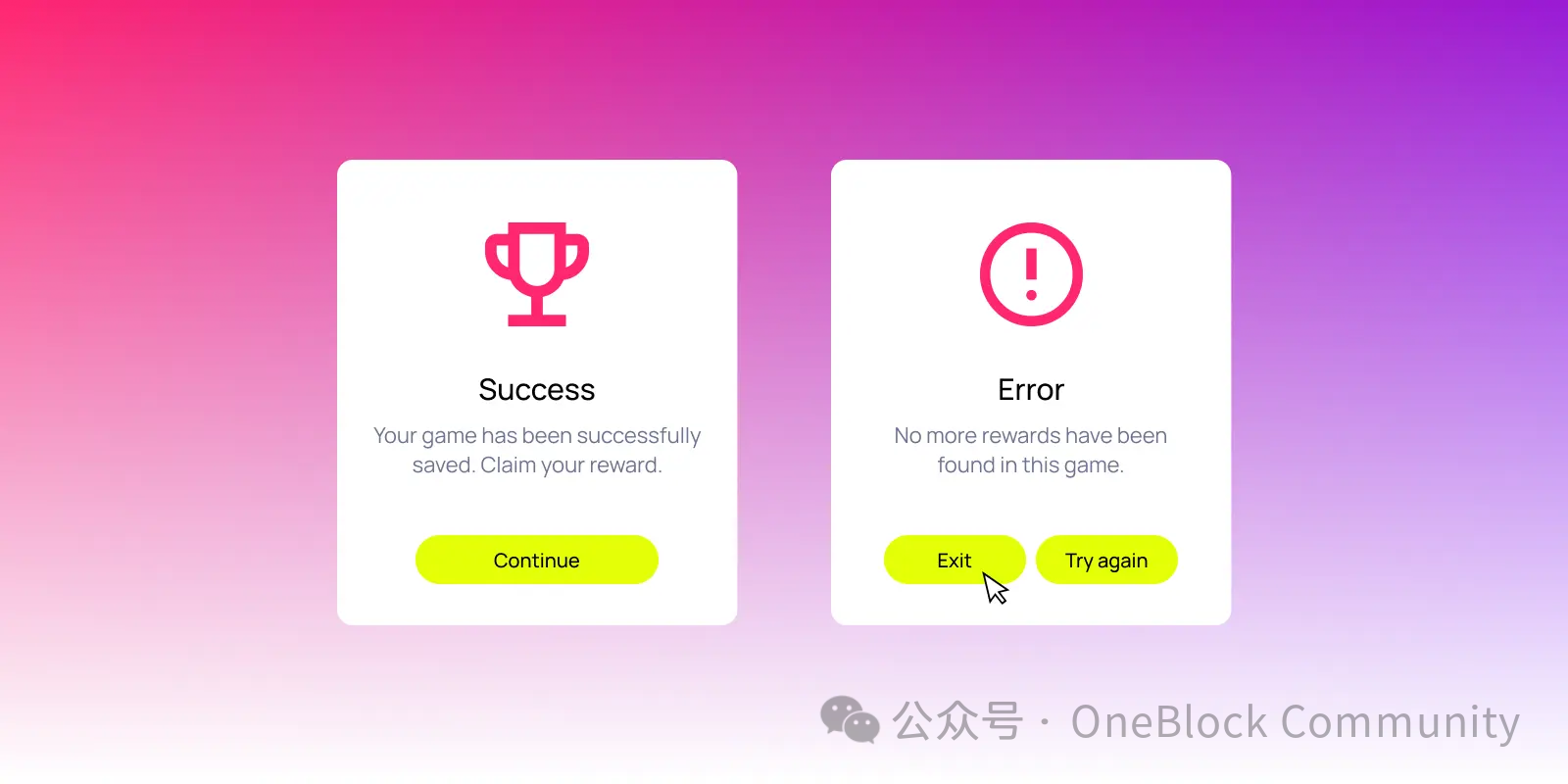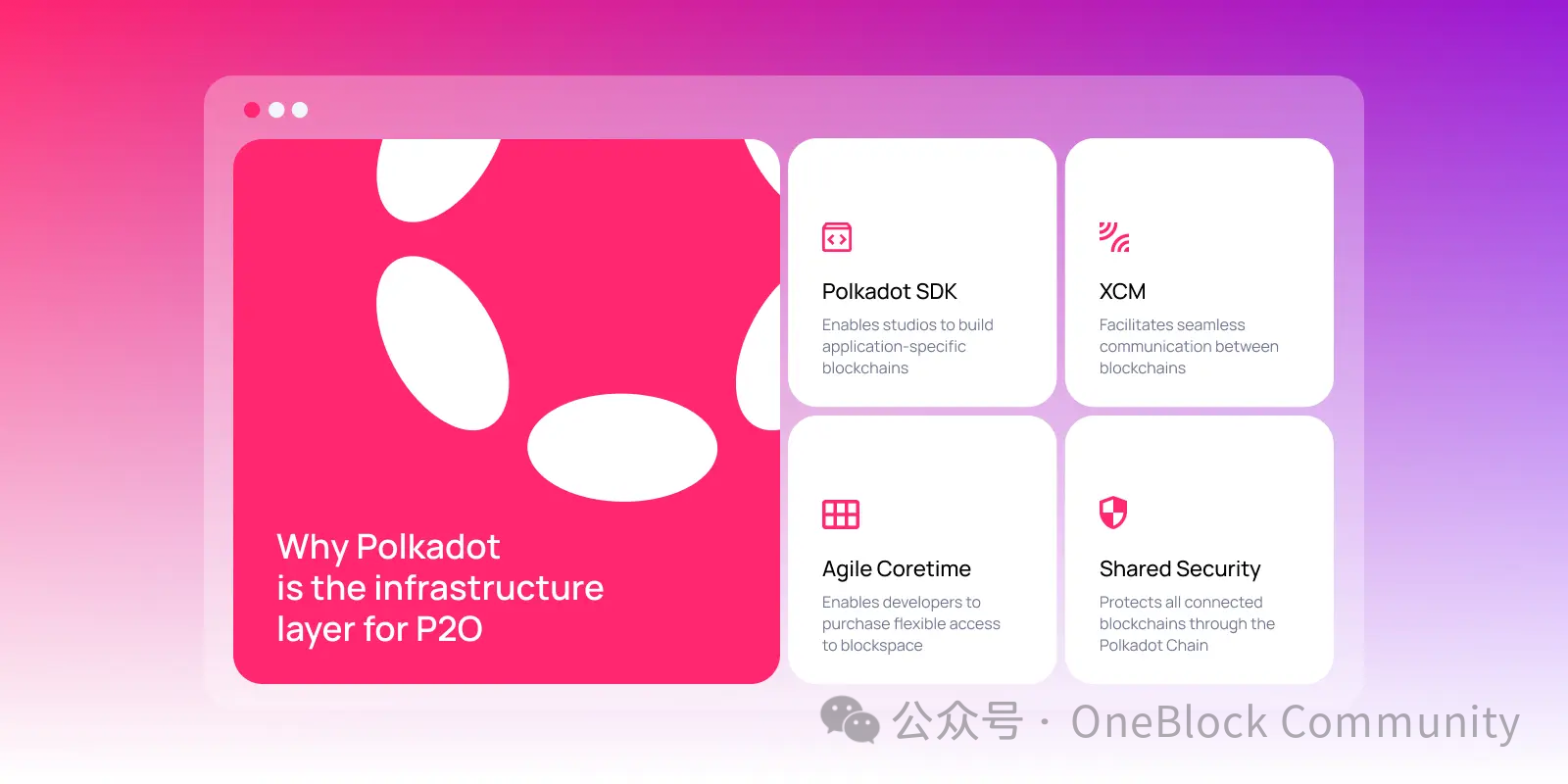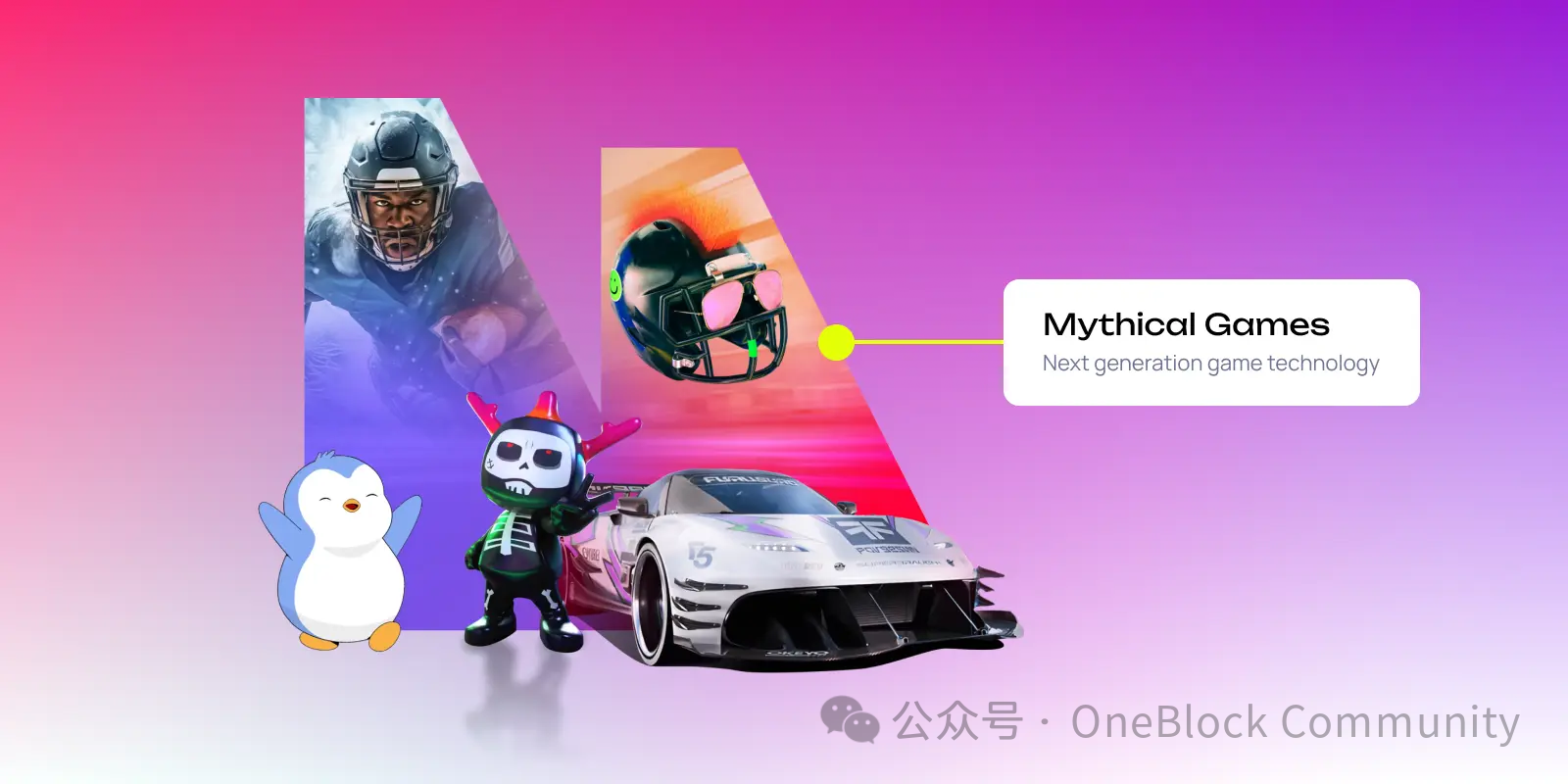Original article: https://polkadot.com/blog/from-play-to-earn-to-play-to-own/
By Joey Prebys
Compiled by: OneBlock+
The core vision of blockchain games is to return control to players by redefining the ownership of game assets. However, although the first generation of the "Play-to-Earn" model quickly became popular in 2021, it was difficult to sustain due to fundamental design problems, and the craze quickly faded.
This article will take you through the rise and fall of the P2E model, and explore in depth how Play-to-Own is gradually emerging as a more sustainable and player-centric alternative. The article will also analyze why Polkadot can provide a solid technical support and development foundation for this new generation of Web3 games through practical cases such as Mythical Games.
🎢The rise and fall of Play-to-Earn
Play-to-Earn promised to usher in a new era of blockchain gaming — one where players could actually profit from their time and skills. Early projects like Axie Infinity and STEPN have even helped gamers in developing countries pay their rent and start businesses to make a living.
However, as the popularity grew, the fundamental problems of this model were gradually exposed: the game became increasingly centered around "exploitation", player benefits continued to shrink, gameplay stagnated, and retention rates could only rely on a steady stream of new users rather than sustainable design.
What’s worse, more and more shoddy copycat projects only copy the surface logic of P2E, lacking core gameplay, balance and user experience. In essence, they are just speculative DeFi projects with a different skin.
Instead of building sustainable game worlds, these projects focused on short-term returns at the expense of long-term player retention. The results are predictable: shallow game mechanics, distorted economic structures, and eventually the system collapsed, and players quickly dispersed.

🎮 Play-to-Own: A gaming experience that truly belongs to the players
Unlike P2E, which relies on financial incentives to drive player behavior, P2O focuses more on “ownership”, “immersion” and “long-term participation”.
When players truly own in-game assets — whether it’s a leveled-up character, a custom item, or a piece of virtual land — they become more invested in the world they shape.
This is not just "holding an NFT", but a deeper connection with the game. Ownership injects value into decisions, progress, and creativity. Players will care more because what they create or obtain is truly theirs and can be kept, traded, and even used across games.
From a design perspective, P2O also changes the goal of the game: developers no longer simply issue rewards to maintain activity, but instead encourage real participation through mechanisms such as customization, growth, and community interaction. At this point, the game itself becomes the reward.
This also changes the way success is measured: instead of looking at token circulation velocity or short-term user growth, we focus on player retention, engagement, and sustainable game economies. This ultimately leads to stronger communities and more resilient ecosystems.
P2O anchors value in experience rather than speculation, pushing Web3 games back to their player-centric nature.
🛠️Reinventing classic games from a P2O perspective
Imagine what would happen if we introduced P2O to familiar games, not to replace what makes the game unique, but to give players true asset ownership, creative freedom, and participation in the future of the game?
Animal Crossing: New Horizons
Players spend years carefully designing islands, cultivating rare flower species, and making furniture, but all these efforts are locked in Nintendo's servers. Once the server is shut down, all the results will be reset to zero overnight.
P2O can completely change all this. Players can truly own their islands and creations as verifiable and portable assets that can be continued in new versions, derivative worlds, or community-driven copies. This ownership will protect players' creativity without platform restrictions.
Pokémon
The series has endured because of the deep emotional connection players have formed with the Pokémon team, but transferring Pokémon across generations is still complicated and requires paid services like Pokémon Home.
Through P2O, players can truly own the Pokémon they capture and cultivate, and keep their battle records, achievements, and evolutions intact, and freely migrate them to future games. Pokémon is no longer just temporary data "licensed" by the company, but a digital asset that truly belongs to the player, a story that can be continued.
Stardew Valley
The most attractive thing about this game is its warm community culture. But at present, even if players make good suggestions, they cannot really participate in the future development of the game.
If it is converted into a DAO model, players can obtain voting rights through in-game participation, jointly propose expansion content, fund seasonal events, and truly participate in shaping the world they love. P2O allows players to not only "own a piece of farmland", but also own the future of the entire "Stardew Valley Universe".
The essence of P2O is not to turn games into "tools that can only be played with tokens", but to unlock a new world - players own their own stories, control their creations, and participate in building a game universe that transcends a single company or server.
🔍 Why Polkadot is the ideal infrastructure for P2O
Although the P2O concept is good, to truly realize it, a suitable technology stack is needed. This is where Polkadot comes into play - it is not a fantasy, but a real infrastructure that makes game assets truly ownable and scalable.
In contrast, Ethereum’s high gas fees and smart contract limitations, Solana’s instability, and congestion issues on various L2 networks have become bottlenecks for complex game mechanisms and high-concurrency user experience. Although there are some expansion solutions on the market, they often come at the expense of performance and stability.

Polkadot completely changes this logic:
Polkadot SDK: Developers can use the SDK to build their own application chain, customize the blockchain that conforms to their own game mechanism, incentive structure and economic system, and even define asset standards and governance mechanisms at the chain level to bring the best experience to players.
XCM cross-chain communication: supports the cross-chain flow of assets, identities, and data between games, truly realizing interoperability between different game worlds, and players can carry their own progress and creativity across multiple ecosystems.
Agile Coretime: Allows developers to flexibly purchase computing resources based on actual needs without the need for long-term leasing, supports dynamic expansion of game scale, and lowers the initial development threshold.
Shared security mechanism: Polkadot main chain provides security for all connected blockchains, eliminating the burden of building an independent validator network. Developers can focus on creating rich, player-centric gaming experiences without having to manage complex network security infrastructure.
This is not just talk. Teams are already building Web3 games based on Polkadot that take into account ownership, creativity, and economic drivers, breaking away from the dilemma of early blockchain games being overrun with speculation.
🌟 Mythical Games: Make blockchain invisible and make the experience purer
Mythical Games’ migration of its Mythos Chain to Polkadot is not just a technical shift, but also a strategic choice: to build a scalable, player-owned gaming ecosystem without sacrificing performance and user experience.
Mythical needs an infrastructure that can handle tens of millions of transactions, support real digital asset economic activities, and provide players with a smooth experience. However, the high gas fees, limited throughput, and inconsistent standards of traditional public chains have seriously hindered development and player experience.
The modular architecture provided by Polkadot just meets these needs. On top of this, Mythical can freely optimize the game operation performance while enjoying the shared security of the entire network without having to deploy complex security mechanisms or manage unstable gas markets.
The effect was immediate: just 48 hours after the migration, Mythos Chain processed more than 3 million transactions and supported the issuance and transfer of more than 16 million NFTs, with extremely low transaction latency and almost imperceptible to players.

Its masterpiece "NFL Rivals" has successfully entered the mainstream player market, allowing them to truly own collectible player cards. These assets exist on the Mythos blockchain, and players still own them even if the game is closed.
Upcoming games such as Pudgy Party and FIFA Rivals also continue this concept: the polished quality of Web2 + the asset ownership of Web3.
For developers, Mythical demonstrates a paradigm - putting players first, using modular blockchain infrastructure to enhance the experience rather than add burden. The blockchain is "invisible", the experience is purer, and ownership becomes a plus point rather than a threshold.
🎯 From Play-to-own to Play-to-stay
The future of blockchain games does not lie in chasing tokens or short-term profits, but in creating a world that players are willing to "live in, build in, and belong to." P2O shifts the focus from speculation to narrative, from exploitation to immersion.
The best P2P games will fully tap into the elements that players love: character customization, digital identity, growth experience and community relationships, and blockchain provides a key added value - true asset ownership without changing the way players play the game.
This is not about getting "crypto users" to play games, but about getting "players" to actively embrace blockchain, because it really makes the gaming experience better.
A truly lasting gaming ecosystem will be built around “meaning” rather than “mechanism.” Players stay not because of token rewards, but because this world is worth their long-term investment.
Polkadot is the ideal platform for building this future. Through modular architecture, seamless cross-chain interactions, and player-oriented tools (such as the Polkadot SDK), developers can focus on creating rich, evolving game worlds instead of being constrained by infrastructure.













